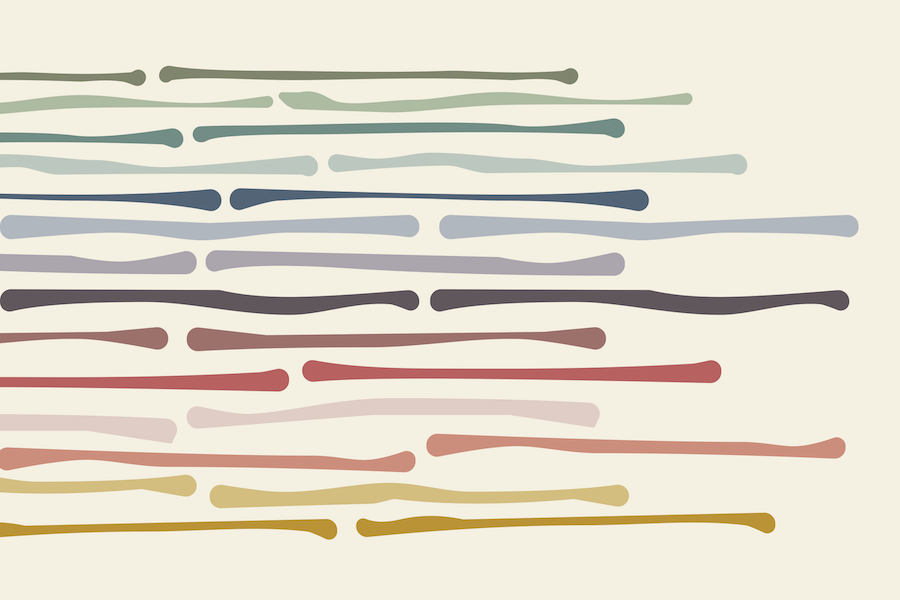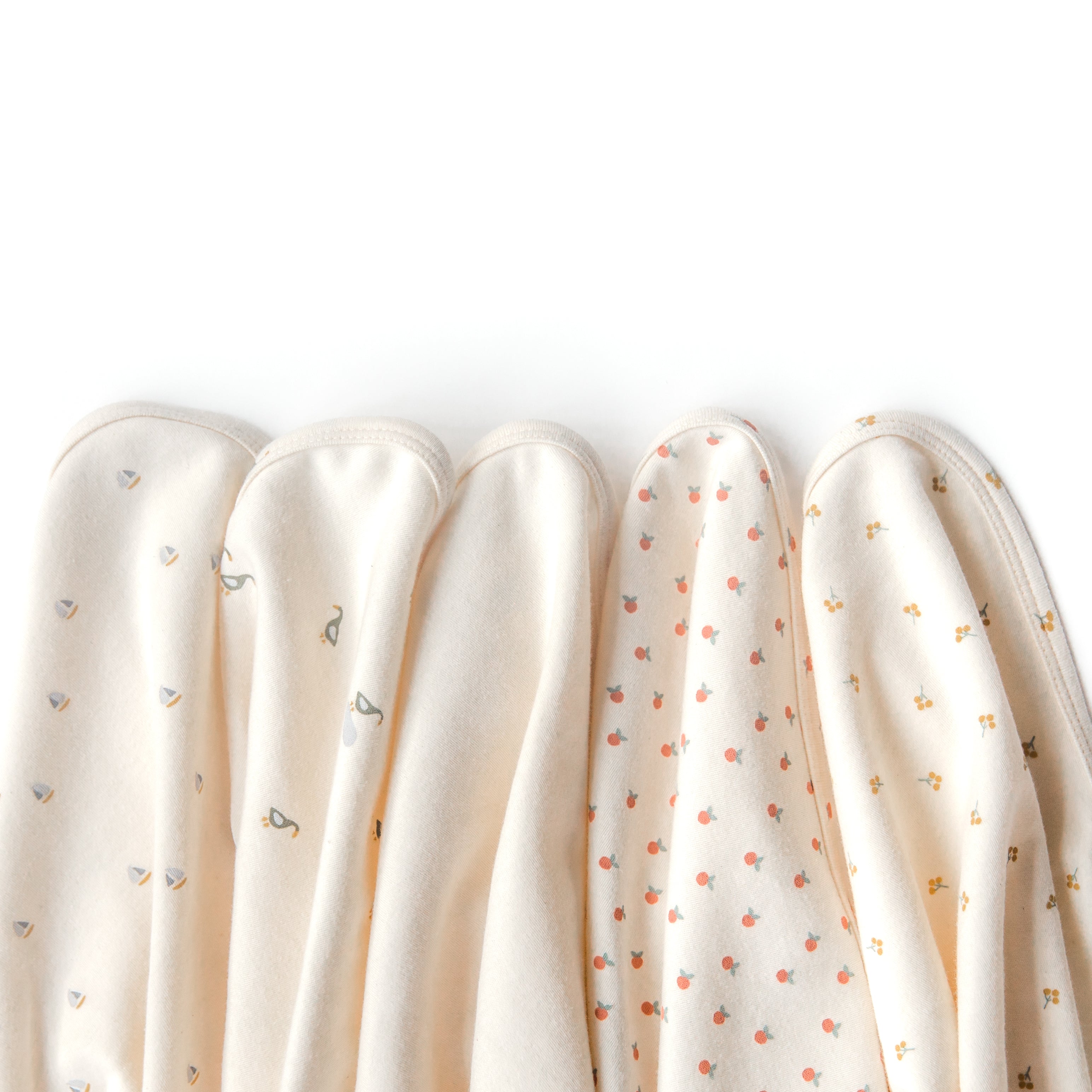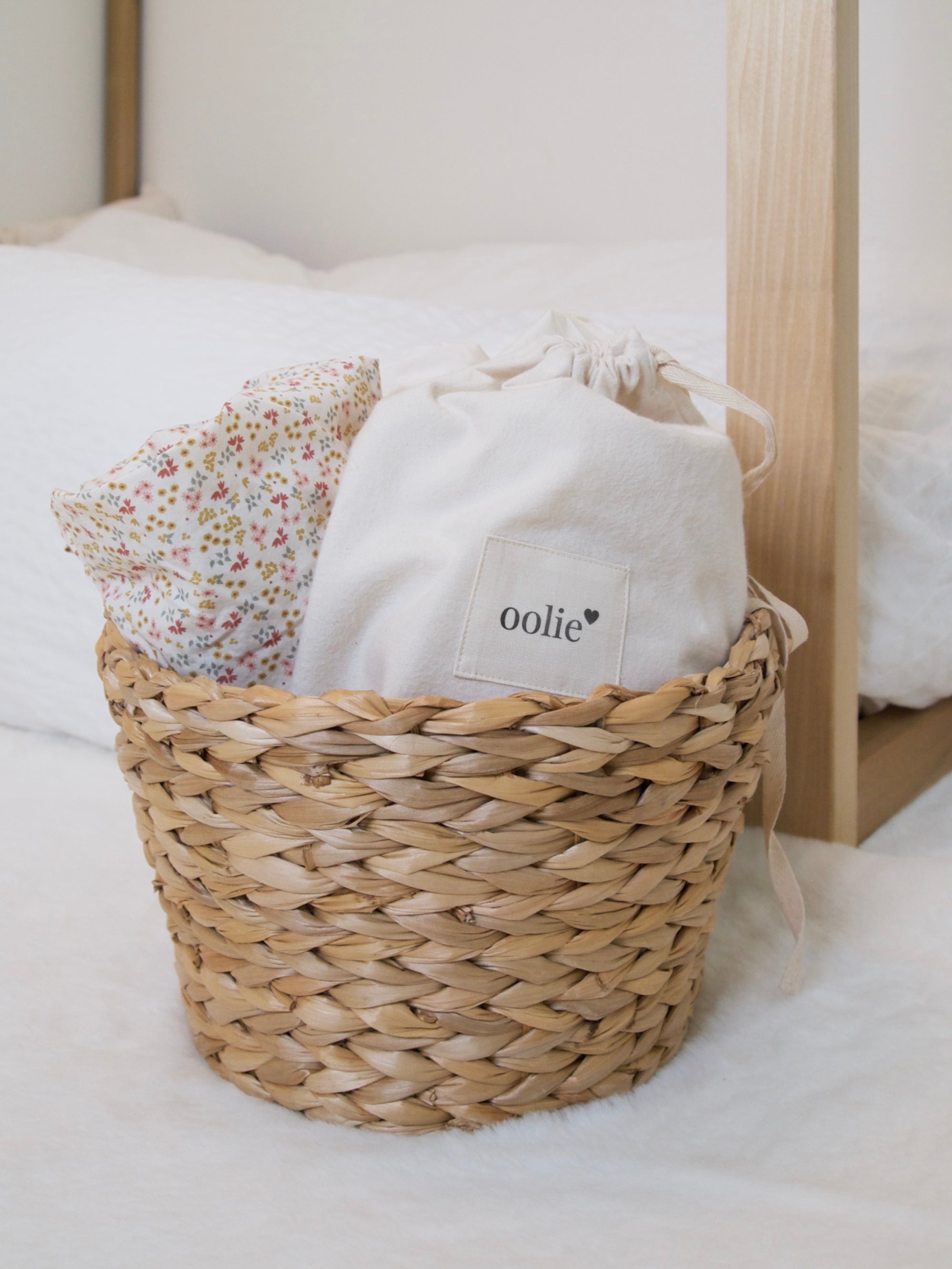What is a benefit company?
Oolie Inc is registered with the state of Oregon as a benefit company. That means we structure our business activities to create positive social and environmental changes for all. Benefit companies must benefit the public at large, not just the business itself.
What is a benefit report?
As a benefit company, we are required to publish an annual report, documenting our business activities and impacts from the prior year. In this year’s report — our second! — we reflect on what we accomplished in 2022.
Oolie’s 2022 Benefit Report
Oolie Inc was established in 2021, so 2022 was our first full calendar year of life. 😊
B Corp Update
It’s appropriate that we’re sharing our annual benefit report this month, because March is B Corp Month!
In last year’s benefit report, we talked about how we adopted the B Corporation third-party certification standard. (We are big on third-party certifications, if you haven’t noticed!) As of today, Oolie still has pending B Corp status.
To become a certified B Corp, you must successfully complete a B Impact Assessment, a rigorous process of auditing company impact across five areas:
- Governance
- Workers
- Community
- Environment
- Customers
Throughout 2022, we were in the “evaluation stage” of the assessment process, so we were busy documenting our business activities’ impact.
Last month, we progressed to the “verification stage,” which means we’ve successfully demonstrated that we satisfied the criteria for B Corp status. (Hooray!) We will complete the verification stage by demonstrating that these claims are all true. (They are; we promise.)
We look forward to completing the verification stage and joining the ranks of fully certified B Corps very soon!
Governance
Oolie’s mission is:
To improve quality of life for families through comfortable, functional, and beautiful bedding solutions that are socially and ecologically responsible by design.
In 2022, we adopted a new Code of Ethics in support of our mission:
- Concern for Self: We cultivate awareness of our unique work style, areas of expertise and areas of growth. We advocate for our best interests in order to work and perform optimally.
- Concern for Colleagues: We show respect, curiosity, and engagement with colleagues. This includes supporting the unique workplace and work style needs of colleagues, as well as demonstrating cultural humility in our workplace. Collaboration is prized over competition.
- Concern for Consumers: We consider the end user experience of our products, taking into account aesthetics, usability, safety, utility, and comfort.
- Concern for Stakeholders: We consider our supply chain and support the rights and humane treatment of all who are involved in bringing our product to market. We make decisions about sourcing accordingly.
- Concern for Planet: We consider the impact of our corporate actions and decisions on the planet.
- Concern for Growth: We engage in ongoing assessment and reflection to improve and strengthen our actions in accordance to numbers 1-5.
To this last point, we believe in applying a growth mindset to our business.
Workers
As part of our remote-first hiring policy, we increased our base hourly rates for contractors in response to increases in cost of living. We have committed to base rates that exceed the living wage, as indexed in the Living Wage Calculator by Amy K. Glasmeier and published by the Massachusetts Institute of Technology.
When evaluating and interviewing potential independent contractors, we strongly encourage applicants who are also raising children, and we accommodate caregivers’ unique needs in our working arrangements.
We continue to cultivate relationships with Fair Trade-certified manufacturers and suppliers. The Fair Trade certification ensures we can trust that our partners’ employees are:
- paid a living wage
- working in safe conditions
- treated with respect and dignity
In essence, Fair Trade means that the vendor’s employees are not being exploited and, thus, Oolie is neither benefiting from nor tacitly endorsing any such exploitation.
In 2022, we declined to pursue relationships with multiple potential vendors who made sustainability claims but could not provide third-party certifications or other documentation of Fair Trade and organic practices.
Oolie continues to be 100% woman-founded and woman-owned. (And we still plan on applying for WBENC Certification at some point.)
Community
We love to collaborate with local, woman-owned businesses — especially Portland Garment Factory. We wrote about our collaboration with PGF to develop our first product, the Shoosh door silencer and safety bumper.
When evaluating new potential vendors, we prioritize companies located nearby, especially in our same bioregion. For example, we are currently evaluating two different potential partnerships with other GOTS-certified operations, both also based in the Pacific Northwest. Only if local partnerships are not feasible will we consider vendors from further afield.
Long-term, our intent is to have as much of Oolie’s raw materials sourced as locally as possible, as well as to move any manufacturing operations closer to home, here in the Pacific Northwest.
We hope to make a substantial investment in reinvigoration of the bast fiber industry. In 2022, we started reaching out to Fibershed, a fantastic nonprofit developing regional fiber systems, as well as individual farmers here in the Willamette Valley. We (and they) don’t yet have the infrastructure in place to produce our fibers locally, but it’s important for us to start cultivating those relationships now, so we can be ready to collaborate — five or ten years from now.
Sustainability — both ecological and relational — requires long-term thinking, and we are building this business for the long term.
Environment
On November 7, 2022, we received our first third-party organic certification, for our cotton products! We wrote about our process of earning GOTS certification and how the Global Organic Textile Standard is the most stringent certification for organic textile products.
We encourage you to verify our GOTS certification on global-standard.org, where you can find our Scope Certificate, the official documentation of our certification process.
Obstacles
Recent inflation — especially in the price of organic cotton and shipping costs — has challenged our commitments to many of the practices we value, such as living wages and the use of organic materials (and third-party organic certification).
However, even in the face of rising costs, our values don’t change. This is a journey we are choosing to pursue because we believe in its importance and benefit to the world. We therefore reaffirm our commitment to our mission and benefit company structure — even in the face of an uncertain path ahead.
Social & Environmental Metrics
Below are the social and environmental metrics that we track annually. Some of these metrics have specific goals or targets attached, though most don’t — yet.
Oolie was founded in August 2021; we didn’t report these metrics for 2021, as it was a partial year and not meaningful. 2022 is our first full year as a company, so we can report on metrics, but we can’t yet make fair year-over-year comparisons to the prior year.
2022, therefore, establishes our baseline values for these metrics. We look forward to our 2023 benefit report, in which will be able to make our first year-over-year comparisons, as well as establish meaningful goals for progress and impact.
Energy use (GJ)
This metric counts only on-site energy use from Oolie facilities (Scope 1). We record both electricity use (kWh) and natural gas (therms), normalized into Gigajoules (GJ).
Our electricity provider reports usage hourly, which is easily aggregated up to annual amounts.
Our natural gas provider reports usage approximately every 30 days, slightly irregularly, and across calendar months. For example, a gas reading taken on January 20th may include 10 days’ worth of usage from the prior December as well as 20 days in January. So to calculate annual totals (e.g., the amount of natural gas used during the 2022 calendar year, January 1 through December 31), we interpolate those December/January readings. While the exact annual values can’t be known, the approximate values are accurate enough for our purposes. Importantly, this process ensures we do not under-count overall energy use.
While we track this number, we do not report it publicly.
Goal: None. Reduction targets would not be meaningful, since our on-site energy needs are relatively small.
Sources: Our electric and natural gas utility providers. kWh and therms have been converted to GJ equivalents.
Energy mix (% from renewable sources)
While our absolute energy use is relatively small, we are still committed to sustainability, and thus we want our energy to be sustainably produced.
Sources we count as “renewable” include:
- hydro (plentiful here in the Pacific Northwest 😀)
- solar (less plentiful here in the Pacific Northwest 😞)
- wind
- geothermal
Although we’re counting these as “renewable” for purposes of this metric, we also acknowledge ongoing debates about these sources’ ecological sustainability. For example, damming a river to generate hydropower does not emit much carbon (compared to burning coal), but it sure does disrupt the river’s flow and ecology.
Goal: No goal for 2022. Since this is our first full year of operation, 2022 establishes our baseline. For future years, increase % renewable sources over time, with the ultimate goal of a 100% renewably sourced energy mix. We will set a specific % target in 2024.
Sources: Our energy providers above, and the EPA Power Profiler’s reported fuel mix for our ZIP Code.
Energy intensity (ratio of energy use to revenue, GJ per $USD)
We measure energy intensity as:
Energy use / revenue
For this metric, lower numbers are better, because lower numbers reflect increased efficiency. For example, say you used 1 GJ and earned $100 in revenue. The energy intensity would be:
1 GJ / $100 = 0.01 GJ per $
That’s a lot of energy to expend for a small amount of revenue. What if you earned $10K, but with the same energy expenditure?
1 GJ / $10,000 = 0.0001 GJ per $
0.00001 is a much smaller number than 0.01, and reflects greater efficiency.
Goal: No goal for 2022. Since we only just started selling in 2022, this ratio will be unusual to start (lots of energy spent per dollar earned). We intend to improve energy intensity in future years by increasing revenue without increasing energy use. We will set a specific % target in 2024.
Sources: Our energy providers above and internal bookkeeping.
Water usage (gal)
This metric counts only on-site water use from Oolie facilities (Scope 1).
Goal: None. Reduction targets would not be particularly meaningful, since our on-site water needs are relatively small.
Sources: Our water provider. CCFs are converted to gallons for familiarity.
Plastic use in products (% of units sold)
There are many different plastics in the world, some more ecologically harmful than others. For purposes of this metric, “plastic” means non-compostable, petroleum-based materials, such as:
- thin film plastic (e.g., for packaging individual products, to protect from humidity exposure during transport)
- poly mailers (e.g., envelopes for shipping)
- nylon (e.g., to make zippers)
For purposes of this metric, we don’t count other materials (such as compostable bioplastics) as “plastics.”
Unfortunately, it is extremely difficult to avoid plastics of all kinds, as there aren’t always alternative materials with the same properties available. The alternatives, including bioplastics, often have their own limitations.
That said, it’s our goal to completely eliminate the use of plastics from our operations. To that end, we are tracking the % of products (number of units) sold each calendar year that:
- contain any plastic(s) in the product itself
- use any plastic(s) for packaging
- use any plastic(s) for shipping
It helps us to track each of these practices separately, to help us see where to focus our plastic reduction efforts. For example, at the moment, we ship products using 100% recycled poly mailers. We count these as “plastic,” even though they are recycled. When suitable alternative materials are available, we will be happy to switch. (See our Ethical Sourcing page for more.)
Goal: Annually reduce, then eventually eliminate, the use of plastics in our products.
Sources: Sales records and internal documentation of materials used in products, packaging, and shipping.
Organic and socially responsible products (% of offerings)
Ecological and social concerns are interconnected and can’t be treated separately. We love the Global Organic Textile Standard (GOTS) because it addresses both. GOTS-certified products are made from organic fibers and meet or exceed rigorous social criteria to ensure no one along the supply chain is being exploited.
We want the production of our products to have both ecological and social benefits, so this metric records the percentage of our product offerings that are third-party certified as both organic and socially responsible. GOTS certification fulfills this criterion, though other certifications may as well.
For example, pretend our offerings included 4 distinct products (not counting different variants, such as sizes and colors). If 3 were GOTS certified, and 1 did not have any such certification, then this metric would be recorded as 75%.
Goal: Increase % of third-party certified organic and socially responsible products over time.
Sources: Internal documentation of product offerings, and third-party product-level certifications (such as GOTS).
Product safety certified (% of offerings)
By inviting an Oolie product into your home, you are trusting us with your family’s safety — including that of your babies, toddlers, and young children. We value your trust enormously, and for that reason we not only meet, but exceed all safety-related regulatory requirements.
This metric records the percentage of our product offerings that underwent and passed third-party safety testing and certification. By tracking this metric, we hold ourselves accountable to ensure every new Oolie product undergoes rigorous safety testing.
Goal: Increase % of third-party safety certified products over time.
Sources: Internal documentation of product offerings, and third-party safety test results.
Product safety recalls (# of recalls)
Infant and children’s products can be recalled in the event of safety concerns or incidents involving the products. In the US, product recalls are coordinated through the Consumer Product Safety Commission.
As described above, we will subject all such products to rigorous safety testing — to ensure safe products and the safety of your children, first and foremost. Secondarily, we would also like to never have to recall an Oolie product.
Goal: Zero, always.
Sources: Internal knowledge and the US CPSC.
Gender diversity (% identifying as other than cisgender male)
Diversity — and equity, inclusion, and belonging — is an enormous, messy issue, and that’s what we love about it. There are all different kinds of diversity, and, in a numerical sense, even more approaches to measuring it.
However, we’re still new and small, so we are choosing to keep this metric similarly small and focused to start, limiting our diversity metric to only one aspect of identity: gender.
We’re framing this metric as the percent of people identifying as other than cisgender male. This phrasing is verbose, and we don’t love how it could be read as centering “male” in the definition itself, but we think it’s inclusive of all genders and reflects our organizational priority.
We’re recording this metric for two different groups:
- employees
- all other individual collaborators, including contractors
Note that this metric counts only individual people; we exclude vendors that are companies, firms, or other kinds of organizations from this metric.
Goal: Maintain or increase level of gender diversity of employees and collaborators.
Sources: Internal records and self-identification by employees and collaborators.
Social & Environmental Metrics Values for 2022
| Metric | Units | 2022 Value |
|---|---|---|
| Energy use | GJ | Not publicly reported |
| Energy mix | % renewables | 14.37% |
| Energy intensity | GJ per $ | 0.13 GJ/$ |
| Water use | gal | 3,079 gal |
| Plastic in product | % units sold | 100% |
| Plastic for packaging | % units sold | 0% |
| Plastic for shipping | % units sold | 100% |
| Organic and socially responsible products | % of offerings | 0% |
| Product safety certified | % of offerings | 0% |
| Product safety recalls | # of recalls | 0 |
| Employee gender diversity | % identifying as other than cisgender male | 50% |
| Collaborator gender diversity | % identifying as other than cisgender male | 78% |
We look forward to 2023’s benefit report, when we will conduct our first year-over-year comparison of these metrics, as well as indicate which goals we achieved in 2023.
Looking Ahead
Thank you for reviewing our second annual benefit report. We hope you’ll sign up for our newsletter below and join us on this journey!
Related posts:
- 2022: Oolie’s First Year
- Oolie’s 2021 Benefit Report
- Oolie’s Collaboration with Portland Garment Factory (with a discussion of growth mindset for business)
Illustration by Nora Murray



